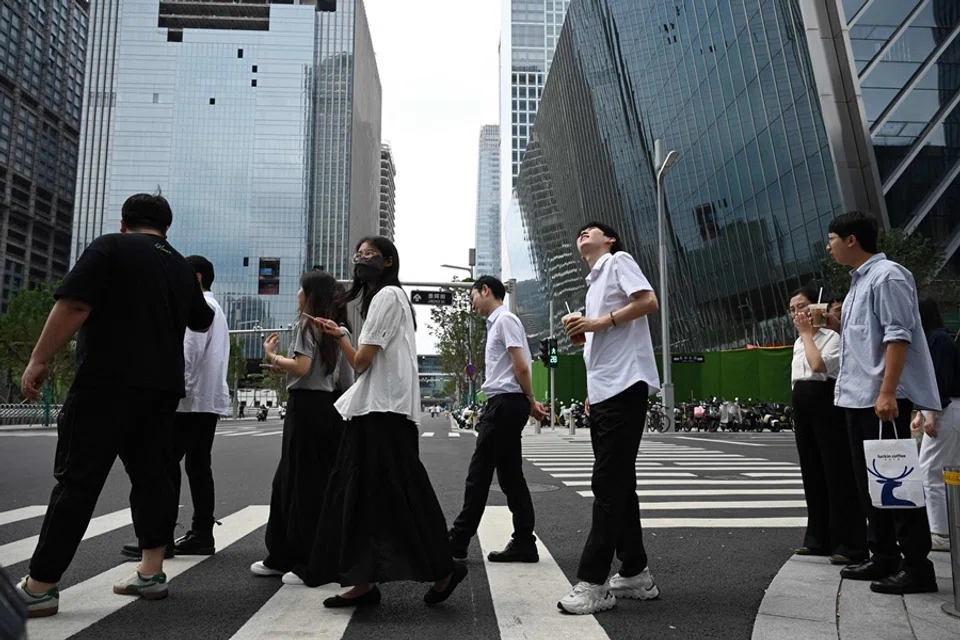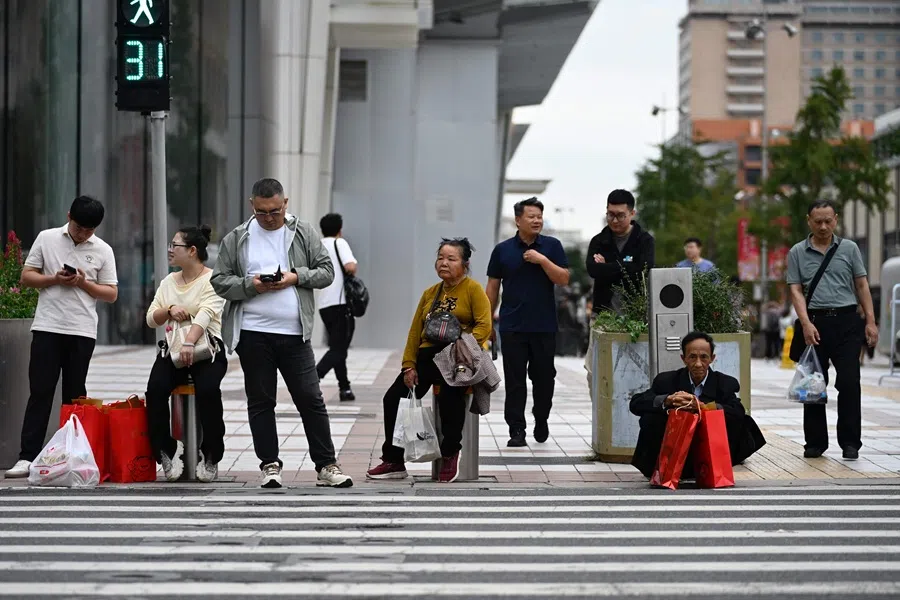China’s wage growth is losing steam amid economic transition
China’s slowing wage growth amid economic transition and rising social security costs are sparking debate. Experts see cautious policy amid structural shifts and an ageing population as key factors shaping income trends. Lianhe Zaobao correspondent Li Kang takes a look at what this means for China’s economy.

After a delay of nearly two months, 31 provincial-level regions in China have released their 2024 average wage data as of 26 September. Compared with the strong growth of previous years, this year’s increases have generally slowed, with most regions seeing a rise of 1% to 2%.
China’s urban wage formula
The “average wage of all employed persons in urban units”, commonly referred to in China as the “social average wage” (社平工资), is calculated as a weighted average based on wages from two types of registered urban employment units in the previous year. These are divided into urban non-private units — typically higher-paying sectors such as government agencies, state-owned enterprises and large foreign firms — and urban private units, which include lower-paying, but formally registered, private companies.
It is one of the key indicators of income levels in China and is also used to determine the upper and lower limits for the following year’s social security contribution base. The upper and lower limits are set at 300% and 60% of the monthly social average wage, respectively.
Typically, this data is released between July and August, but this year’s publication was delayed, with most regions only beginning to release figures in mid-September.
... among China’s 31 provincial-level regions, three have monthly social average wages exceeding 10,000 RMB: Shanghai’s 12,434 RMB (roughly US$1,742), followed by Beijing at 11,937 RMB, and Tibet at 11,777 RMB...
Modest increases in social average wages
According to Lianhe Zaobao’s tabulations, among China’s 31 provincial-level regions, three have monthly social average wages exceeding 10,000 RMB: Shanghai’s 12,434 RMB (roughly US$1,742), followed by Beijing at 11,937 RMB, and Tibet at 11,777 RMB, which is boosted by high-altitude and cost-of-living subsidies.
With the exception of Jiangxi, Henan, Hunan, Guangxi, Hebei and Shanxi, where monthly social average wages remain below 7,000 RMB, all other provinces fall within the 7,000 RMB to 8,000 RMB range. Of these, 11 provinces report figures above 8,000 RMB.
In terms of growth, only Heilongjiang maintained a high increase of 8%, while the rest saw more modest gains between 1% and 2%. For example, Jiangsu (1.5%), Zhejiang (1.48%) and Hunan (1.1%). Provinces such as Jilin, Anhui, Jiangxi, Shandong, Henan, Shanxi and Gansu recorded a 2% rise.

Specifically, Shanghai’s social average wage rose by 1.03% year-on-year, marking a second consecutive year of slight adjustment to the contribution base. Over the five years from 2019 to 2023, the lower limit for the social security contribution base — the minimum income level used to calculate pension and insurance payments — rose from 4,699 RMB to 7,310 RMB, averaging an annual growth rate of over 9%.
Beijing’s social average wage saw a modest 1.5% rise, slowing from the previous year’s 4.11%. The lower limit of the social security contribution base nearly doubled over five years, climbing from 3,613 RMB in 2019 to 7,162 RMB this year.
... the slowdown in social average wage growth is partly due to the persistent slump in traditional sectors such as real estate, affecting wages in those industries. — Shen Hong, Research Fellow, Institute of New Structural Economics, Peking University
Amid China’s slowing economic growth and shrinking household incomes, the slight increase in social average wages has sparked online debate. Some netizens found it absurd that “wages are lower than the social security base”, “earning 4,500 RMB but making a social security contribution of 7,460 RMB!” Others expressed relief that the social security base “has finally stopped increasing”.
Government’s confidence in economic outlook
Shen Hong, a research fellow at Peking University’s Institute of New Structural Economics, told Lianhe Zaobao that the slowdown in social average wage growth is partly due to the persistent slump in traditional sectors such as real estate, affecting wages in those industries. Moreover, China’s economy is currently in a transition, with emerging industries still accounting for a relatively small share, thus their contribution to overall average wage is limited.
Shen noted that structurally speaking, salaries in private units — despite making up a larger share of the workforce — are lower than those in non-private ones. Thus, as private sector employment grows, it pulls down the overall income level.

Regarding the public’s perception of income disparity, Shen believes that this feeling must be considered from both psychological and relative perspectives. Psychologically, recent declines in housing prices have created a negative wealth effect — meaning that even if incomes remain unchanged, people feel poorer and thus reduce their spending. Additionally, with average annual income having risen by around 10% in past years, a current increase of just 5% may still give the impression of falling income.
... unless major changes occur, the government typically prioritises continuity and consistency when introducing policies. — Shen
Practically speaking, with the new mandatory contribution regulations taking effect on 1 September, Chinese companies now face a heavier social security burden for employees. Amid worsening population ageing and the depletion of social security funds, there are simultaneous calls to raise and lower social security contributions.
Shen said that unless major changes occur, the government typically prioritises continuity and consistency when introducing policies. A sudden reduction in the social average wage could be interpreted as a lack of confidence in the economic outlook. “In reality, it conveys a prudent policy stance and signals confidence in future economic development,” he explained.
This article was first published in Lianhe Zaobao as “中国31省市区2024年社平工资出炉 涨幅普遍放缓”.





